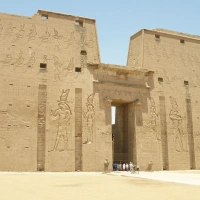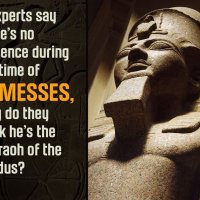Continuing the Hike the Bible series surveying major hiking trails in the Lands of the Bible…
Two hiking trails from Nazareth to Capernaum re-create possible routes that Jesus may have walked when He left Nazareth for Capernaum near the beginning of his ministry (Luke 4:16-37).
The 40-mile Jesus Trail was established in 2007. Israel opened the new 39-mile Gospel Trail on Nov 29, 2011.
Jesus undoubtedly traversed all or parts of these trails during His sojourns in Galilee. The best way to get a feel for the land that Jesus knew is to hike the routes He most likely followed.
Comparison of the Trails
The Gospel Trail is an $800,000 Israeli government project to promote tourism and economic development. It somewhat duplicates the already existing Jesus Trail.
The older Jesus Trail was privately developed by American David Landis and Israeli Maoz Inon. They envisioned the Jesus Trail as a world-class hikers’ trail following the footsteps of Jesus and as a tool to promote learning about His life and teachings. They expect the trail will bring people together from different nationalities, cultures, and religions.
Landis and Maoz built the trail from scratch by route-finding between points of interest, building relationships with villagers, and encouraging locals to offer support services for hikers. They arranged to officially blaze the trail and include it in tourist publications.
The Jesus Trail lies entirely within “Israel proper” and does not cross into the Palestinian territories. Thus there are no checkpoint crossings to contend with on the Jesus Trail as there are on some other hiking trails in Israel. The Gospel Trail also lies within Israel.
Why did Israel expend so much money, time, and effort to develop the redundant Gospel Trail when the existing Jesus Trail already functioned well?
The Jesus Trail goes through both Jewish and Arabic communities, while the Gospel Trail primarily passes through Jewish communities. This change was one of the motivations for Israel’s development of the Gospel Trail. The Israel Ministry of Tourism believed many Arab towns were dirty and unsightly, and they were concerned about safety issues.
The downside of this is that the Gospel Trail skips significant Christian sites like Cana, the site of Jesus’ first miracle where He turned water into wine (John 2:1-12). After the Cana wedding, Jesus went to Capernaum, so this is another occasion when He surely used portions of these two trails.
The Gospel Trail Map from the Israel Ministry of Tourism shows a side route to Cana, but this trail does not exist on the ground.
As one can see on the Gospel Trail Map, the Gospel Trail also misses Nazareth. It starts south of Nazareth at Mt. Precipice, the traditional site where the people of Nazareth tried to throw Jesus off a cliff (Luke 4:28-30). The Gospel Trail contains many fewer significant Christian sites than the Jesus Trail.
The Jesus Trail is divided into contiguous legs of 3-5 miles which start/end at towns or road junctions accessible by the Israeli bus system. The trail winds through towns to encourage relationships with villagers and to support local businesses through overnight stays and food/supply purchases. Each night of the standard hike schedule offers the option to stay in a village inn–two nights in Arab towns (Nazareth, Cana) and two in Jewish towns (Ilaniya or Lavi, Arbel).
For the first 15 miles, the two trails are completely different. They converge at Ilaniya and then diverge again at Lavi. The Gospel Trail bypasses the Horns of Hattin and the Arbel Cliffs in order to provide a gentler hiking experience. The Gospel Trail thereby skips some spectacular views which are on the Jesus Trail.
The Jesus Trail is marked in both directions with painted blazes (orange stripe between 2 white stripes) as shown in the picture, with the next blaze always visible.
The Society for the Protection of Nature in Israel (SPNI) marked the Jesus Trail. “Marking the trail serves both to improve accessibility to hikers and also to limit environmental impact to one path,” said Gili Greenbaum, Marking Coordinator for SPNI.
The Gospel Trail is marked by stone cairns that are sometimes 500 meters apart. These cairn markers are harder and more expensive to maintain.
Water supply is an issue on the Gospel Trail. Since it avoids many towns, water access is off route much of the way. This means hikers have to carry an extra 10-20 lbs of water with them to prevent dehydration. Hikers die from dehydration every year in Israel.
The Gospel Trail is harder to reach by public transit and resupply is more difficult because it avoids towns. However, it’s easier to cover by car than the Jesus Trail.
The Gospel Trail is a gentler, “sanitized” hiking experience for the tour bus crowd. Sections are accessible by strollers and wheelchairs and less exertion is required.
The Jesus Trail hike is more strenuous. It is rated “Moderate Difficulty” for 24 miles of the trail. Two segments totaling 6 miles are rated “Difficult” with steep ascents and descents. The last 8 miles of the Jesus Trail approaching the Sea of Galilee are rated “Easy”.
Based on my internet research, I think the older Jesus Trail is the better hiking trail. The Jesus Trail has better support services for hikers, better trail markings for navigation, and better access to water, food, and supplies. It has more Christian and historic sites and provides much better interaction with locals and the diverse cultures in Galilee.
Soli Deo Gloria.
This is the third installment in the Hike the Bible series reviewing major hiking trails in the Lands of the Bible.
Read the prequels:
1. Hike the Bible – Jesus Trail (with video)
2. Hike the Bible – Gospel Trail (with video)
Read the sequel:
4. Hike the Bible – Nazareth

©William T. Pelletier, Ph.D.
“contending earnestly for the faith” (Jude 1:3)
Wednesday February 1, 2012 A.D.
Read my January 2012 newspaper column:
Adam’s Mythical Diary 5.
Jesus was going throughout all Galilee, teaching in their synagogues and proclaiming the gospel of the kingdom, and healing every kind of disease and every kind of sickness among the people. (Matthew 4:23)






























Thanks for this well-written and informative article! I just wanted to add a correction. You mention “crossing back and forth through checkpoints.” There are no checkpoints on the Jesus Trail. The Jesus Trail is entirely within “Israel proper” and does not cross into the Palestinian territories. Many people do not realize that about 20% of Israeli citizens are Arab and about 50% of Galilee residents are Arab. Christians, Muslims and Jews live in peace together in the Galilee.
LikeLike
By: Anna on February 1, 2012
at 11:11 am
Thanks for this correction, Anna. I removed the checkpoint statement from my review so as not to mislead people who don’t read comments or don’t have access to them. And I added your information about the Jesus Trail being entirely within Israel. I hope to hike the Jesus Trail someday myself.
LikeLike
By: BibleScienceGuy on February 1, 2012
at 11:44 am